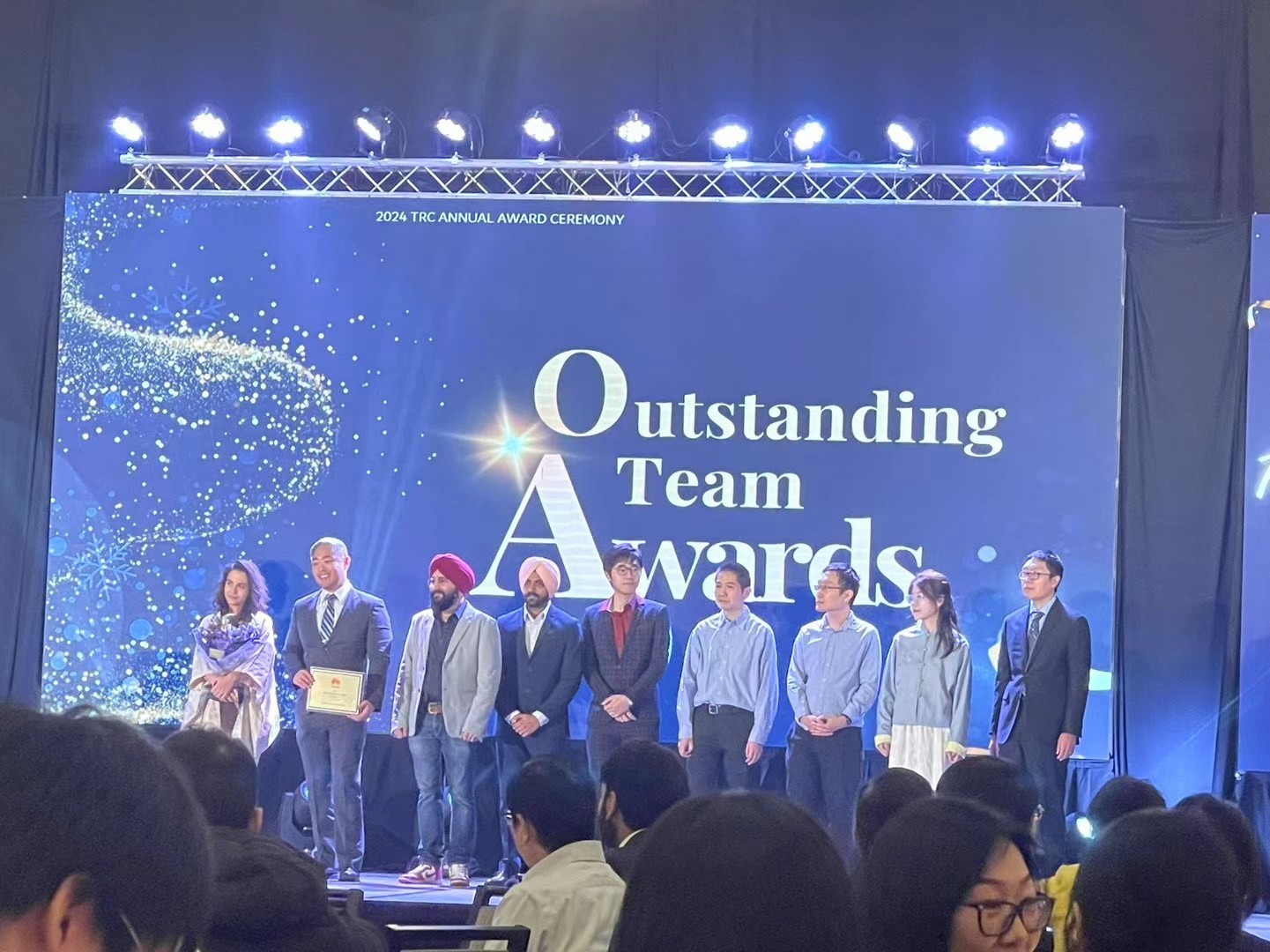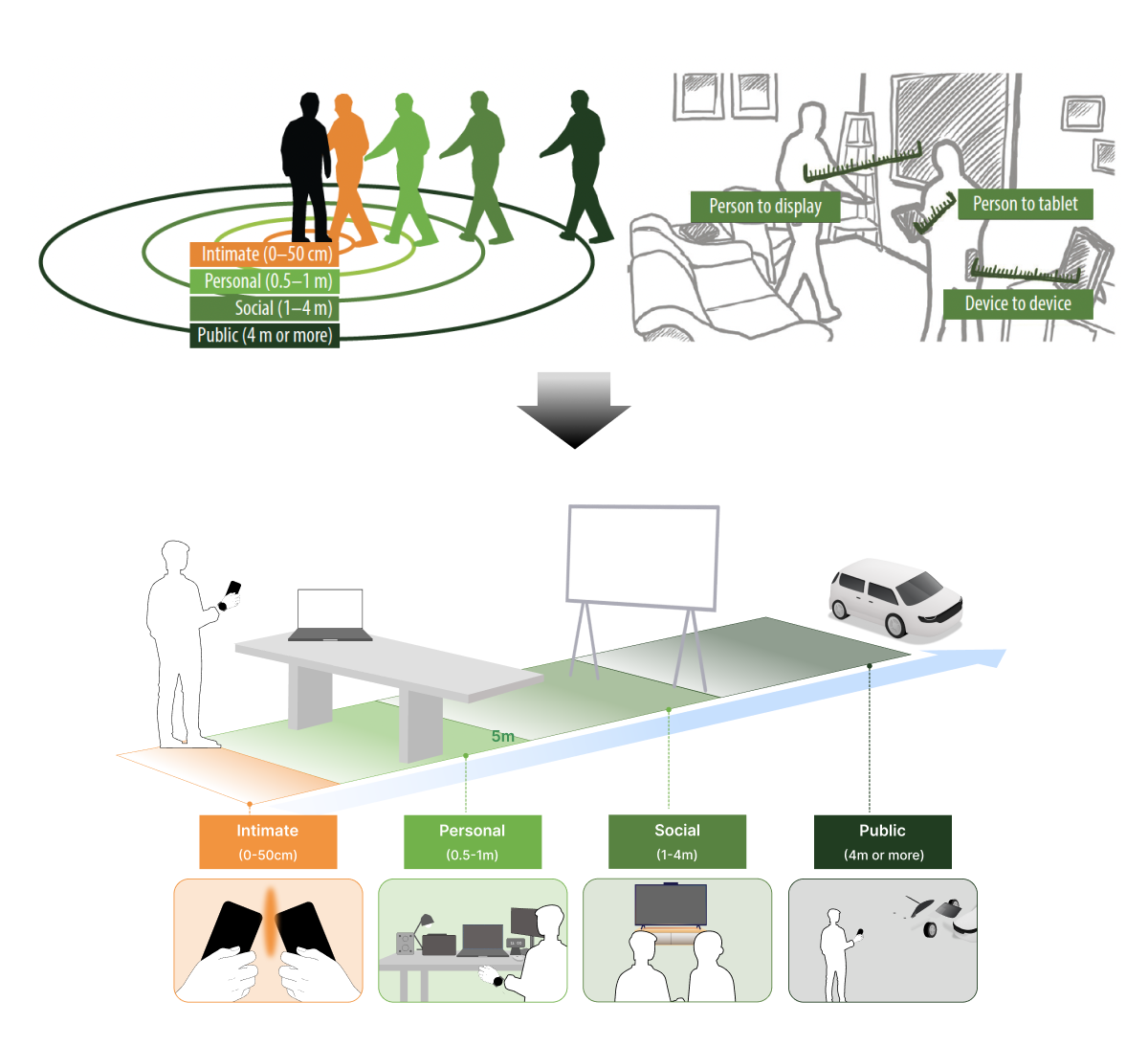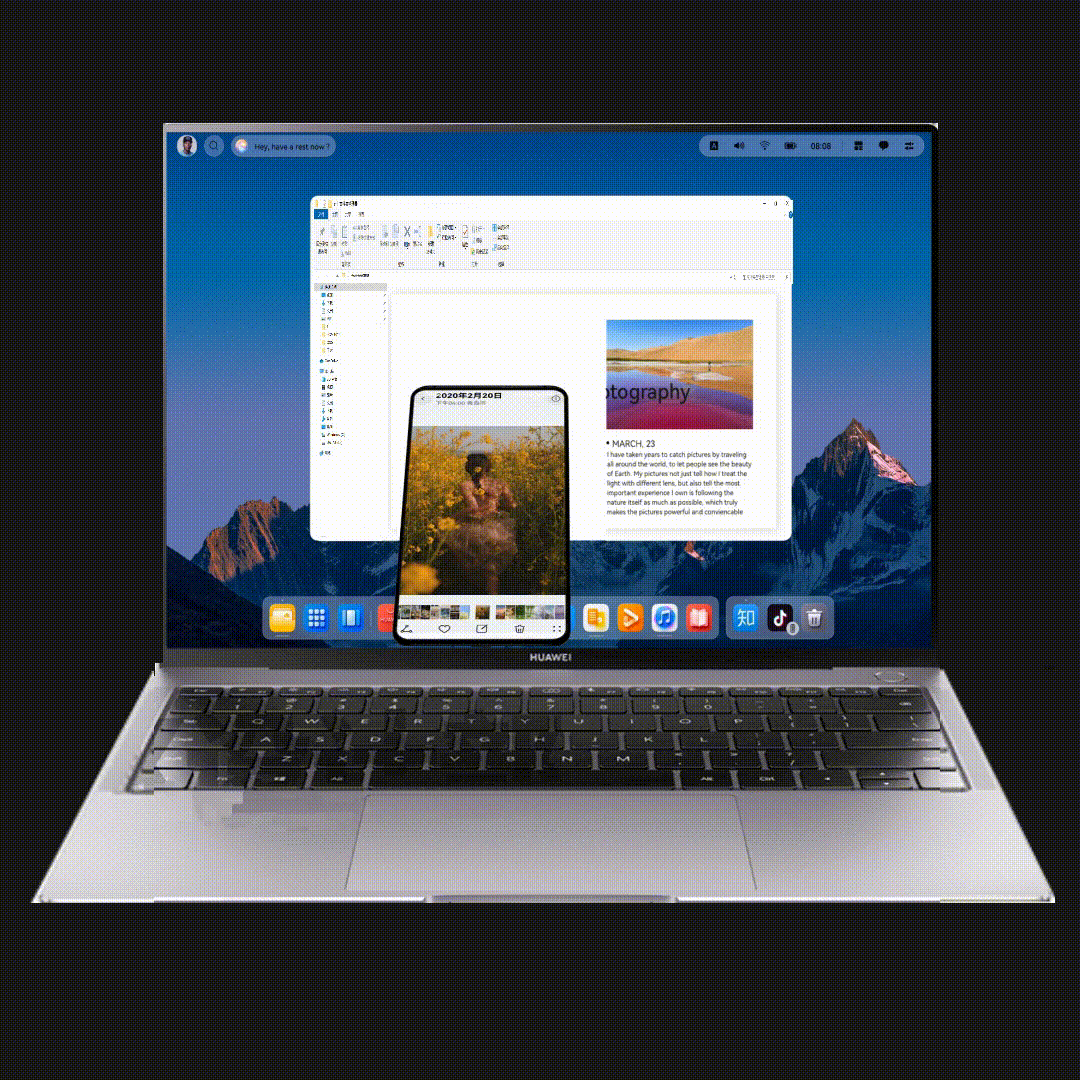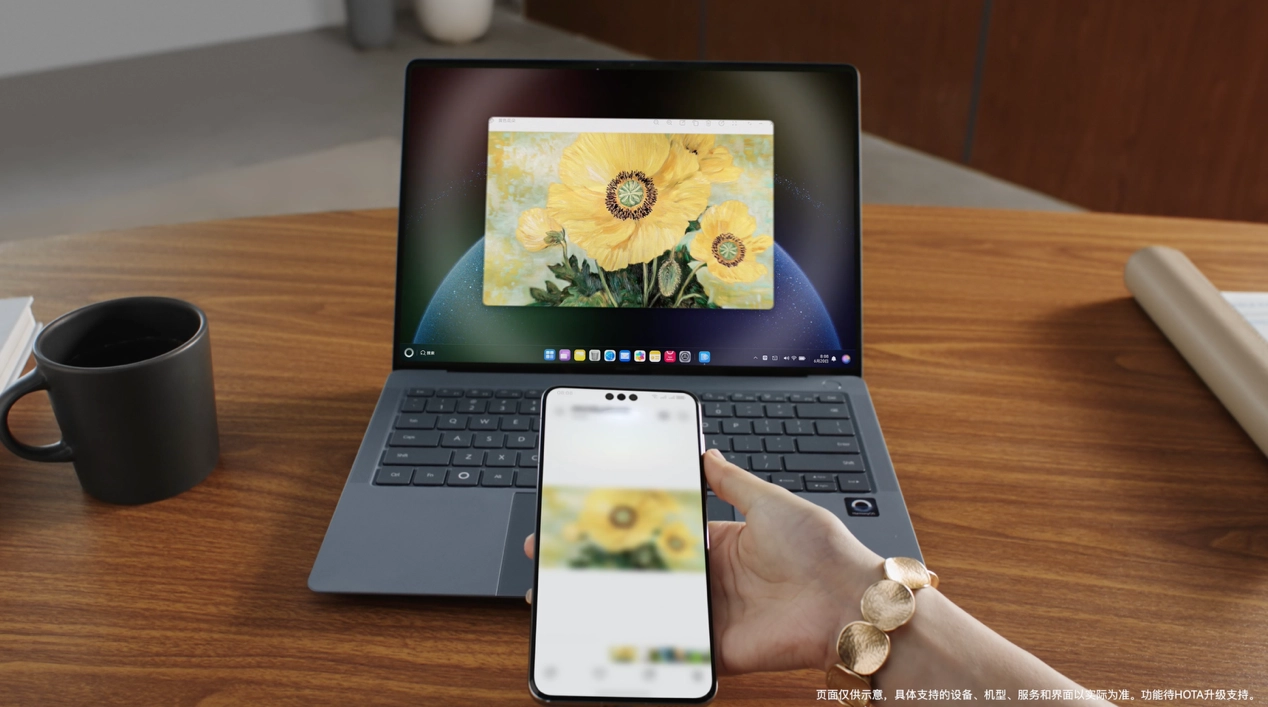
Smart Sense Screen
2024
“Device-to-Screen Interaction” in “SmartSense Screen” was introduced at HDC 2025, with the patent already filed.
*Due to confidentiality agreements, sensitive details have been either omitted or intentionally blurred in this case study. All views expressed here are my own and do not necessarily reflect those of the Huawei Human-Machine Interaction Lab.
Context
Background
Cross-device interaction has long been one of Huawei’s core strengths, enabled by its broad product ecosystem spanning smartphones, tablets, wearables, PCs, TVs, and vehicles.
Design by accretion
“Tap to Transfer” redefines how people share content at close range—transforming multi-step, time-consuming processes into a seamless, one-step interaction. This ultra-near-field experience brings a new level of fluidity and satisfaction to device-to-device sharing.
This cross-device interaction allows users to share information simply by bringing two smartphones close together. It also enables instant sharing of photos, videos, favorite items, or games, making it effortless to share with friends
My role
From January to October 2024, I led the exploration of user scenarios for device-to-screen interactions, successfully proposing and advancing two features—NFC Tapping and Screen AR Entry. Both features are launched and have contributed to two filed patents.
In this project, I worked closely with 2 researchers, 5 AI engineers, and 1 project manager to turn advanced technical research into practical and intuitive user interactions.

Device interactions, as well as those between people and devices, should seamlessly adjust to variations in distance.

Edward T. Hall’s proxemics theory
suggests that physical proximity between individuals reflects and influences their social relationships—the closer the distance, the greater the anticipated level of interaction.
This principle can also be applied to human-device and device-to-device interactions, where proximity should inform the type and intensity of interaction.

User Scenarios: Ultra-Close Proximity Interaction
① User-to-Device Proximity – e.g. facial recognition, gestures (touch, tap, swipe), voice commands (whispers), or biometrics (fingerprint, iris scan)
② Device-to-Device Proximity – approaching from different angles and directions
Screen AR
Filed for patent protection
As smart accessories like digital pens and earbuds gain more functionality, users frequently need to navigate through multiple menus and apps to manage their settings—leading to complicated and frustrating interactions. To solve this, we applied the concept of tangible interaction, allowing users to directly place accessories onto the screen to immediately access and configure settings in just one step.
OneHop
Filed for patent protection


